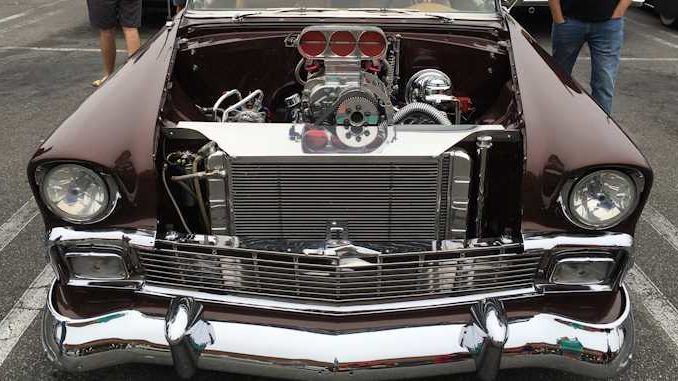
A radiator is a common term for many different types of heat exchanges. The radiator can be located under the hood of the vehicle as it is mounted behind the vehicle’s grille.
Radiators do not have any electronic parts of their own. Special sensors will register the temperature of the coolant as it exits the radiator.
In automobiles with an internal combustion engine, you will find that radiators connect to the different channels that run through the engine and the cylinder head (sits on top of the cylinders and consists of most of the combustion chamber and the location of the valves and spark plugs). There is a liquid that pumps through this. This liquid is a mixture of water with ethylene glycol, which is also known as antifreeze.
The fluid is moved in a closed system that goes from the radiator to the engine. Here it will conduct the heat away from the engine parts. It then carries the heat primarily to the radiator.
The radiator is behind the grill, the cold air that comes through to cool the radiator, and cools the fluid inside that keeps the engine cool.
To keep the interior of the vehicle warm a small radiator called the heater core is used. To operate this small radiator inside the vehicle a system of valves and/or baffles is usually incorporated into it.
Remember that if you heat the inside of a vehicle, it will also help to keep the engine cool. It is for this exact reason that you always hear mechanics say, that if the engine of your vehicle is overheating, you should turn on the heater inside the vehicle.

When the coolant goes through the system, it flows through a thermostat, which controls the rate of flow back to the radiator. This is where it is then cooled again by convection with the air. This process will cool the entire engine.
A lot, if not most heater cores will bypass the engine’s main thermostat and heat in the passenger compartment will not either a working thermostat or even an engine temperature that sufficient to open the thermostat.
So, by the time the hot engine coolant has made its way through all of the chambers of the radiator, it should then be cool enough to make it’s a return trip through the engine block.
But, if blockage reduces fluid flow or any loss of fluid, the engine block will not cool down and this will then cause the engine coolant to boil over. Therefore, it very important to maintain a full coolant level at all times, especially during the hot weather or when doing long drives.
Radiators – Explained
Performance Radiators – Explained
Some engines have an additional oil cooler. Oil coolers are a separate small radiator that cools the motor oil.
Intercoolers
Engines with forced induction may also have an intercooler. Compression causes the intake air to heat up and heat from compressor inefficiencies.
This is actually the greatest cause of the increase in intake air temperature. Intercoolers cool down the intake air temperature to increase the density of the air being fed into the engine, and thereby make more power.
Air-to-Air Intercoolers
Air-to-air intercoolers exchange their heat directly with the atmosphere. Additional cooling can be provided by externally spraying a fine mist onto the intercooler surface, or even into the intake air itself, to further reduce intake charge temperature through evaporative cooling.
They are designed to be mounted in areas of an automobile with maximum air flow, typically near the front bumper, in line with the car’s radiator.
Air-to-Liquid Intercoolers
Air-to-liquid intercoolers transfer hot intake air to an intermediate fluid, usually water, which finally rejects heat to the air. These systems are often in other locations, usually due to space constraints or excessive heat.
Air-to-liquid intercoolers are usually heavier than their air-to-air counterparts. This is due to additional components making up the system (water circulation pump, radiator, fluid, and plumbing).
A big advantage of the air-to-liquid setup is the lower overall pipe and intercooler length. Air-to-liquid intercoolers are by far the most common form of intercooler found on marine engines, given that a limitless supply of cooling water is available.




